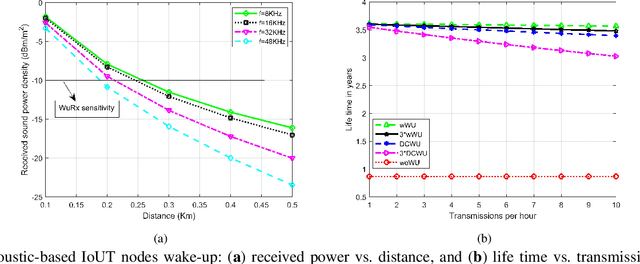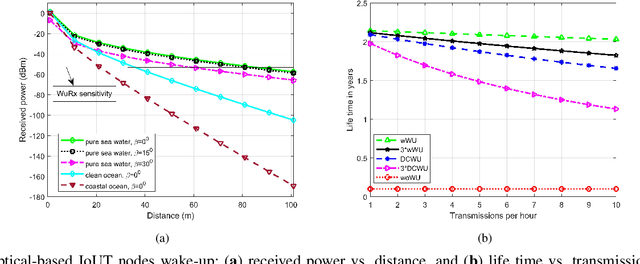Muhammad Muzzammil
Full-Duplex Magnetic Induction Communication: Opportunities and Challenges
Dec 17, 2022



Abstract:The demand for high data rates is rapidly increasing as the interest in Magnetic Induction (MI) communication-based underwater applications grow. However, the data rate in MI is limited by the use of low operational frequency in generating a quasi-static magnetic field. In this paper, we propose the use of full-duplex (FD) MI communication to efficiently utilize the available bandwidth and instantly double the data rate. We propose a two-dimensional transceiver architecture to achieve full-duplex communication by exploiting the directional nature of magnetic fields. We further evaluate the proposed end-to-end FD MI communication against self-interference (SI), its impact on communication distance, and robustness in view of orientation sensitivity. Finally, we conclude by discussing typical challenges in the realization of FD MI communication and highlight a few potential future research directions.
Towards Sustainable Internet of Underwater Things: UAV-aided Energy Efficient Wake-up Solutions
Aug 25, 2022



Abstract:With the advancements in underwater wireless communications, internet of underwater things (IoUT) realization is inevitable to enable many practical applications, such as exploring ocean resources, ocean monitoring, underwater navigation, and surveillance. The IoUT network comprises battery-operated sensor nodes, and replacing or charging such batteries is challenging due to the harsh ocean environment. Hence, an energy-efficient IoUT network development becomes vital to improve the network lifetime. Therefore, this paper proposes unmanned aerial vehicle (UAV)-aided energy-efficient wake-up designs to activate the underwater IoT nodes on-demand and reduce their energy consumption. Specifically, the UAV communicates with water surface nodes, i.e., buoys, to send wake-up signals to activate the IoUT sensor nodes from sleep mode. We present three different technologies to enable underwater wake-up: acoustic, optical, and magnetic induction-based solutions. Moreover, we verify the significance of each technology through simulations using the performance metrics of received power and lifetime. Also, the results of the proposed on-demand wake-up approach are compared to conventional duty cycling, showing the superior performance of the proposed schemes. Finally, we present some exciting research challenges and future directions.
 Add to Chrome
Add to Chrome Add to Firefox
Add to Firefox Add to Edge
Add to Edge